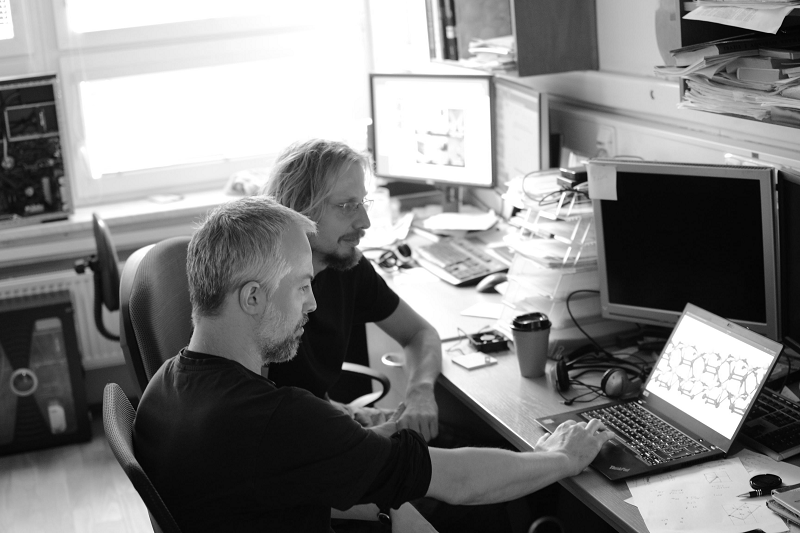
Theory and simulations
Our main effort is directed towards theoretical investigation of fundamental properties of dielectric materials using various calculation and simulation techniques. In particular, we aim at ferroelectrics and relaxors, which are crucial for a wide range of applications. Due to their large piezoelectric and dielectric response they are widely utilized as accurate actuators, extremely sensitive sensors in e.g. medical devices, in telecommunication components, but they possess a lot more applicable and perspective properties. We focus at elucidating the mechanisms driving their exceptional performance, and using the acquired knowledge we participate in further tuning of materials for particular purposes/applications or even in the development of new materials.

It turns out that a common feature of these materials is the presence of an electric polarization. Mostly, their performance depends on the ability of polarization to switch between different orientations. Because polarization is strongly coupled to mechanical deformation, it can be switched not only with electric field, but also via application of mehanical stress or even other mechanisms. The heterogeneity of ferroelectric polarization on different scales and typically large density of interfaces between regions with similar polarization, which are called ferroelectric domains, facilitates the switching process and allows for the same effect to occur upon application of smaller driving forces. In addition, the material properties are heavily influenced by chemical disorder, defects of different kinds, presence of boundaries in polycrystals, etc. All this makes the target material group extremely versatile and suited for applications, but on the other hand challenging theoretically and experimentally.
In order to capture the important physics of ferroelectrics and relaxors, we address the materials on different length scales using quantum-mechanical calculations for most detailed treatment, through atomistic empirical-potential-based simulations up to phenomenological models which allow to capture important interactions within multidomain samples with reasonable accuracy. In this multiscale approach we study the material structure, dynamical properties and electromechanical properties stemming from intrinsic (related to a perfect crystal) as well as extrinsic (e.g. due to domain interfaces or defects) contributions.
As a part of the Department of Dielectrics we participate in interpretation of spectroscopic experiments (mostly related to dynamics of solids). We profit and continue in a rich tradition of research on ferroic phase transitions and domains done in the Department of dielectrics by distinguished Czech solid state scientists V. Dvorak, J. Fousek, V. Janovec. We have strong background in analysis of symmetry-related aspects of materials, ferroic interfaces between domains, as well as phase transitions, and we continue to progress in this direction.
Besides that, we are also interested in topics related to quantum criticality and quantum phase transitions, which is realized and observed in systems with a strong interaction between the valence electrons of solids. Itinerant magnetism and superconductivity are the paradigm quantum macroscopic phenomena in strongly correlated electron systems. We use the technique of Green functions and Feynman diagrams to assess analytically the effects of strong electron interaction with the aim to describe quantum critical behavior in nanoscale as well as bulk materials.
We have plenty of collaborations with theoretical and experimental groups around the world as well as in Czech Republic, and participate in explaining of experiments and validation of theories obtained elsewhere. We also publish our own theoretical predictions and ideas, which are yet to be experimentally confirmed.

